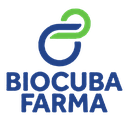Executive Secretary

VIII International Symposium on Chemistry and Pharmaceutical Sciences
SICF
VIII Symposium "Design, Obtaining and Development of Drugs"
Abstract
The Center for Chemical Bioactives (CBQ) is an organization dedicated to the production of synthetically obtained active pharmaceutical ingredients, such as 2-bromo-5-(2-bromo-2-nitrovinyl)-furan ( furvine). The objective of our work is to validate the analytical technique for the semiquantitative determination of monobromine in the bromination stage of Furvine synthesis. The method is based on the chromatographic separation of MBr, the main impurity present in the test samples, obtained during the furvine synthesis process, using thin layer chromatography. The parameters developed in the validation were: specificity and detection limit. For specificity, the value of the retardation factor (Rf) was determined. The color, size and shape of the spot of the sample and of the Furvine prepared solutions were compared with respect to the MBr standard spot. It is observed that the Mbr stain in all the mobile phases tested has a circular yellow stain that differs from the furvine stains that are more intense yellow, and has a lower Rf. For the detection limit, several dilutions of the Monobromine solution were prepared and the chromatogram was developed in triplicate. The detection limit is 0.4 µg. The assay method for the semiquantitative determination of MBr in the bromination stage of Furvine synthesis was found to be specific and with a detection limit of 0.4 µg.
Resumen
El Centro de Bioactivos Químicos (CBQ) es una organización dedicada a la producción de ingredientes farmacéuticos activos (IFA) obtenidos por vía sintética, tal es el caso del 2-bromo-5-(2-bromo-2-nitrovinil)-furano (Furvina). El objetivo de nuestro trabajo es validar la técnica analítica para la determinación semicuantitativa de monobromado en la etapa de bromación de la síntesis de Furvina. El método se basa en la separación cromatográfica del MBr, principal impureza presente en las muestras de ensayo, obtenidas durante el proceso de síntesis de furvina, utilizando para ello la cromatografía de capa delgada. Los parámetros desarrollados en la validación fueron: especificidad y límite de detección. Para la especificidad se determinó el valor del factor de retardo (Rf). Se comparó el color, tamaño y la forma de la mancha de la muestra y de las soluciones preparadas de Furvina con respecto a la mancha del patrón de MBr. Se observa que la mancha de Mbr en todas las fases móviles ensayadas tiene una mancha circular amarilla que difiere de las manchas de furvina que son de un amarillo más intenso, y tiene un Rf menor. Para el límite de detección se prepararon varias diluciones de la solución de Monobromado y se desarrolló el cromatograma por triplicado. El límite de detección es de 0,4 µg. El método de ensayo para la determinación semicuantitativa del MBr en la etapa de bromación en la síntesis de Furvina, resultó ser específico y con un límite de detección de 0,4 µg.
About The Speaker

MSc. Yaima López Hernández

Discussion




